The Adaptable Fox and other Canids
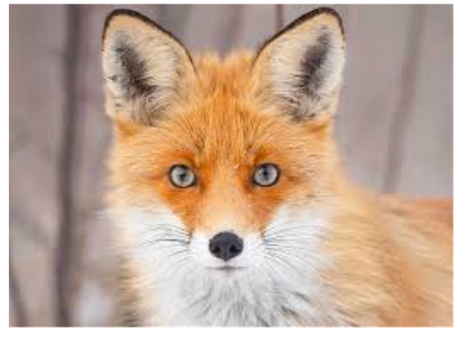
by Linda Martinson
Blue Ridge Naturalist
One definition of a fox is “a wolf who sends flowers”. Unlike wolves that are rarely seen but often persecuted or the versatile coyotes, foxes are more solitary and rarely bothered unless they are killing chickens. This may be because they are small and cute; clearly not a threat; and careful not to be seen. Often when a fox sees a person, it freezes and watches curiously for a while looking rather sweet and friendly, i.e., “they send flowers”. Foxes belong to the Canidae family of mammals in the order Carnivora, which also includes domestic dogs, wolves, coyotes, jackals, dingoes, and many other dog-like mammals both extant and extinct.
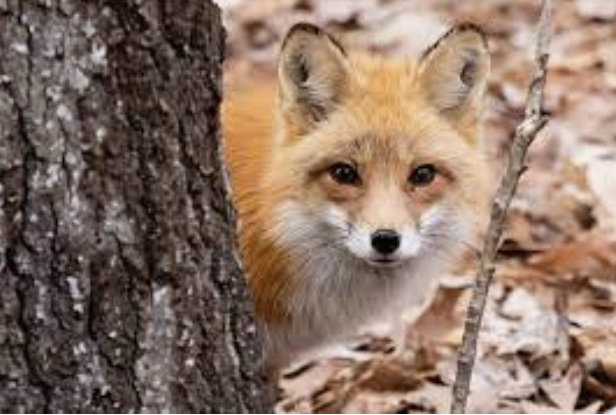
Wolves are the largest of the Canidae family and foxes are the smallest. An adult wolf weighs about 150 pounds and is about three feet tall; a mature fox weighs about 30 pounds and is about one foot tall. Coyotes are in between: about two feet at their tallest with a mature weight of about 50 pounds. Both wolves and coyotes live in packs and hunt much larger animals than do foxes. Foxes are more solitary, but frequently live with two or three companions including a mate (they are usually monogamous but not always). They are definitely given to more solitary pursuits than wolves and coyotes when hunting and after their pups are mature. Foxes mate in January/February which is when they are most often heard, screaming and barking at night. They have between 3-5 cubs and both parents are attentive to them. The gestation period is about 53 days and pups grow up fast, in about 4.5 months. They stay together, usually with both adults, for about six months.
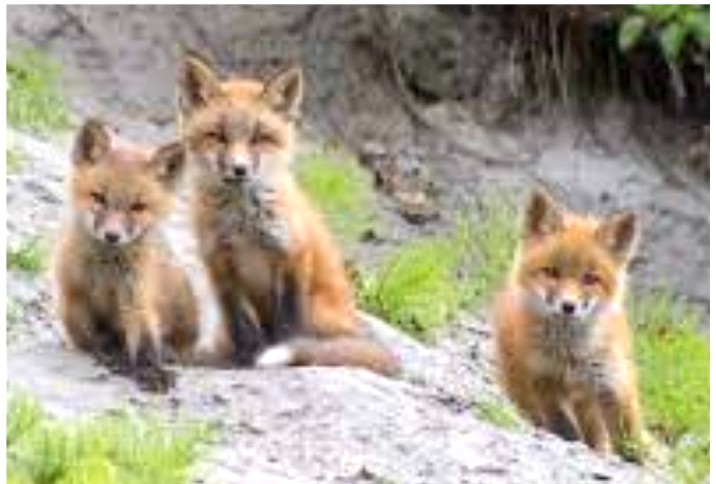
allthingsfox.com
Foxes only hunt small animals and also eat insects, fruits, eggs, and carrion. They frequently live in urban areas where they happily devour garbage and hunt mice and rats. And maybe life in the city is too easy and they sometimes get bored, because some urban foxes have been known to scavenge shoes left on doorsteps and hoard them in hide-aways. Both country and city foxes sometimes give each other “gifts” of food or odd shaped sticks or rocks. Some foxes have been “domesticated”, but they retain an unpredictable wild streak.
There are 24 extant species of foxes in 7 genera. The genus Vulpes, sometimes referred to as the “true foxes”, has the most species: 12 including the red fox. There are four species of fox in the United States: the red fox; the gray fox; the kit fox, found mostly in the southwest and the smallest of the four; and the arctic fox, found only in the far north of the continent. The red fox is not native, at least not on the east coast, and there is some controversy about the timing of their arrival in the U.S. Some fossils have been found that indicate that they may have arrived about the same time as Columbus. If so, they were introduced again from Europe by fox hunters in the early 1700s.
The red fox has been described as “one of nature’s loveliest and most elegant creatures.” They are one of the most prevalent wild animals on the planet, and live all around the world in a wide range of environments. In the U.S., they are found in every state except Hawaii. Australia alone is estimated to have over seven million red foxes. Although they are thriving worldwide, red fox populations have taken massive hits, such as the 95% reduction of the fox population in Bristol, UK, because of a massive outbreak of mange, and they are killed for their fur in many countries.

“Relatives are the worst friends, said the fox as the dogs took after him.”
Danish Proverb
Fox hunting began in England in at least the 15th century and was brought to the new world, with red foxes, in the early 1700s. Dogs were trained to run foxes to the ground and inevitably they tore them apart. This is illegal now in England, Scotland, the United States and Canada. There are about 140 hunting clubs remaining in the U.S. and Canada with an emphasis on the chase and not the kill. Dogs now track chemical scents, and jumps and other obstacles are set up for the dogs, horses and riders.
Both red and gray foxes live in Western North Carolina, and the gray fox is apparently increasing in areas where the number of coyotes has expanded. Although it is difficult to estimate because foxes in forested area are seldom seen, it is likely that there are more gray than red foxes. Why? Because gray foxes can climb trees which makes it easier to avoid coyotes (they have claws) and they are not as susceptible to mange, which is often a scourge for red foxes that have contracted this painful disease by dogs. Gray foxes are slightly smaller than red foxes and are not only a different species, they belong to a different genus. Their coloration is a salt and pepper gray with a dark streak across the back, along the top of the tail and ending in a black tail tip.
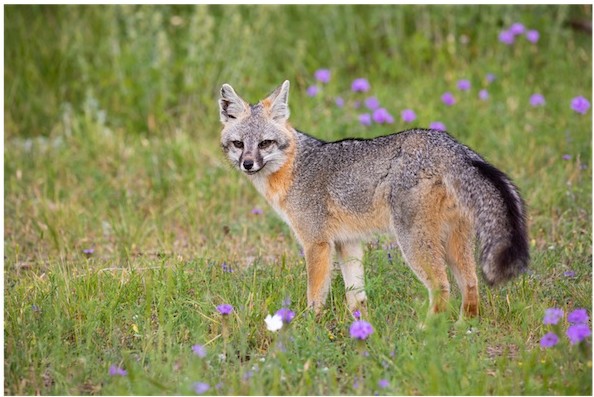
Foxes are mostly monogamous, at least during breeding season, but they are solitary hunters. Wolves and coyotes are pack animals, hunting together and strongly monogamous, and their brains are different and structurally more complex than those of foxes. Wolf and coyote brains contain a dimple in the frontal region and additional brain folds that form a ridge on the cerebral cortex, structures that fox brains do not have. The hypothesis is that these additional brain structures relate to the more sophisticated social behavior of larger pack hunting canids.
In general, foxes are an amazingly successful species, thriving in numerous and varied environments all over the world. Coyotes are amazingly adaptable and able to reproduce rapidly, and they are holding their own throughout North and Central America. They seem to have superior observational learning intelligence well above that of all other animals and learn quickly from experience. But there is one canid that stands out in terms of adaptability and breeding success: domestic dogs!
There are an estimated one billion dogs in 400+ breeds all over the world including a significant number of wild dogs that usually live in close proximity to people. Close relatives to wolves, dogs formed quite a successful partnership with humans at least 14,000 years ago with some estimates of up to 40,000 years ago. This partnership has worked very well for both humans and dogs. One hypothesis is that humans developed an evolution of cooperation which enabled them to dominate the planet, and we became even more successful when we extended our ability to cooperate with each other to another species, dogs.
There is increasing genetic evidence for co-evolution between humans and dogs. In 2017, a team of researchers found two canine genes that dogs have that wolves and other canids do not have. These genes correlate with sociality in dogs with variants of several genes that had previously been identified in Williams-Beuren syndrome (WBS), a rare genetic disorder in humans. A core feature of WBS is hyper-sociality, ie. evoking friendliness toward everyone they encounter. When the team evaluated dogs and wolves on tasks that measured sociality, they found two genes in dog brains that correlate with this hyper-sociality syndrome in humans with WBS. This indicates that the key evolutionary event that turned wolves into dogs was the development of specific genes in their brains that resulted in intense sociality between humans and dogs allowing them to bond easily with each other.
Hyper-sociality? Works for me!

Foxes, coyotes and dog are thriving or at least holding their own in varied environments across the world. Wolves, however, are struggling to maintain the existence they presently have in North and Central America and across the world, mainly because their habitat is becoming increasingly fragmented and they are hunted as pests in many parts of the world, especially in the United States.
Worldwide there are three wolf species: gray wolf, timber wolf, and red wolf, and 40 subspecies. All three species are extant in the United States and Canada with gray wolves the most abundant. They are found in all but the most northern parts of Canada and in nine states: Alaska; northern Michigan; northern Wisconsin; western Montana; northern Idaho; northeast Oregon; Colorado; Utah; and the Yellowstone area of Wyoming. A subspecies, Mexican gray wolf, is now found only in southeastern Arizona and southwestern New Mexico, but there are efforts to reintroduce them in Mexico.
Abundant is a relative term. Gray wolves were considered endangered for years because there were so few of them left in the lower 48 states, and for 45 years they were protected and listed as an Endangered Species. But in March 2019, the Fish and Wildlife Service removed the gray wolf from the Endangered Species list. Since then, it has been open season on wolves in many states, and hunters have legally killed hundreds of them. Montana, for example, has passed new laws to severely reduce the number of wolves in their state. In Idaho, hunters have legally killed hundreds of gray wolves in the last two years, and a recent new law in the state calls for killing up to 90% of them with any means possible. The claim is that wolves are killing too many livestock, but only 130 cattle and sheep were confirmed as probable wolf kills between July 2019 and June 2020, and Idaho alone has 2.7 million cattle.
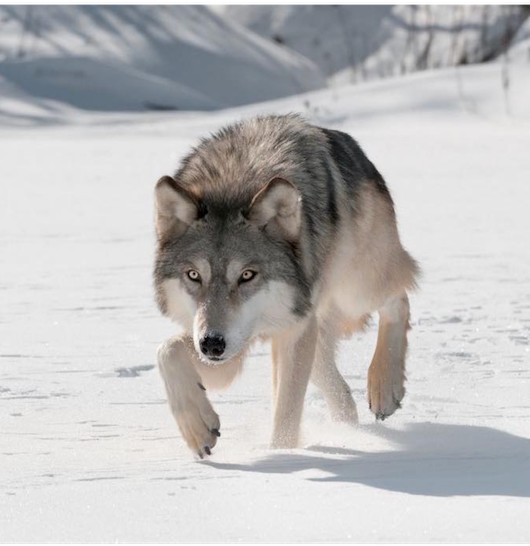
The Wolf Patrol photo is an advocacy group in Wisconsin dedicated to the protection of wolves in the United States with a recent success. On October 22, 2021, they coordinated a coalition of wildlife advocacy groups to stop the annual Wisconsin Wolf hunt sanctioned by the Wisconsin Department of Natural Resources scheduled to start on November 6—and it worked!
More good news is that many Native American tribal organizations in the U.S. are banding together to stop the full scale wolf killing in several states. And still more good news is that the world’s only wild population of red wolves just expanded by eight more. Four adult red wolves and four captive-born pups were released into a wildlife refuge on Albemarie Peninsula in eastern North Carolina, the only place in the world where wild red wolves are now found after being declared extinct in 1980. Hopefully, they will flourish in their new home and so will the wolf population across the world; coyotes in the United States and Canada; and foxes everywhere.

References:
“Red wolves released into wild” May 2021 National Geographic
The Hunt That Still Thrills” Associated Press.March 30, 2015
“New Idaho Law Calls For Killing 90% Of The State’s Wolves” May 2021 npr.org
“Co-exist with Foxes” Mark Buckler wildlife.org May 2018
“Foxes of North America” wildliferesponse.org “Decoding the Canine Brain” Gregory Berns, Emory University Dana Foundation April 15, 2020
http://www.differencebetween.net/science/nature/difference-between-wolves-and-foxes/#ixzz7AtjW4ba9







19 comments